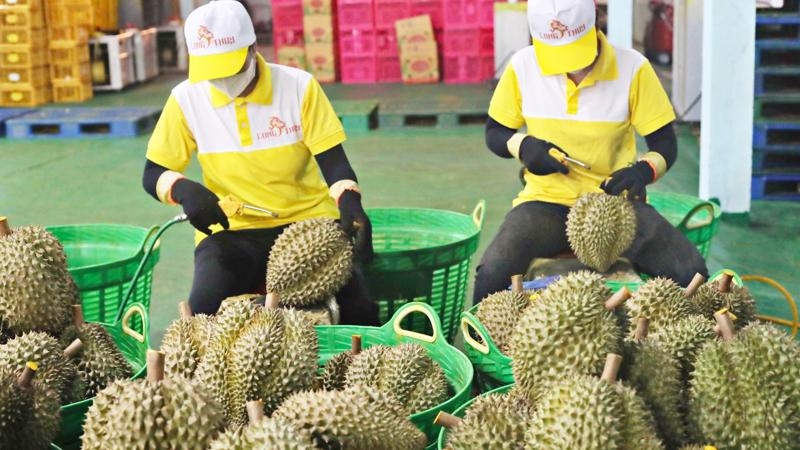Fruit and vegetable exports earn some 4.6 billion USD in eight months
Tuesday, 27/08/2024 11:34 (GMT+7)
Vietnam’s fruit and vegetable exports are estimated to reach more than 700 million USD in August 2024, up 26.8% from the previous month and up 50.8% from the same period last year, according to the Vietnam Fruit and Vegetable Association.
This is one of the months enjoying the highest fruit and vegetable export value as it coincides with the peak durian harvest period in the Central Highlands. In the first eight months of the year, fruit and vegetable exports are estimated to reach 4.58 billion USD, up 29.1% over the same period last year.
 |
| Fruit and vegetable exports earn nearly 4.6 billion USD in eight months. (Photo: vneconomy.vn) |
China continues to be the largest import market with nearly 2.5 billion USD of fruits and vegetables from Vietnam in the first seven months of the year, accounting for 64% of the market. It is followed by the United States and the Republic of Korea with export values of 189 and 188 million USD, up 31% and 51%, accounting for 4.88% and 4.87% of the market share.
Notably, Thailand has risen to fourth place in the list of markets importing fruits and vegetables from Vietnam. In the first seven months, fruit and vegetable exports to Thailand reached 123 million USD, up 70% over the same period last year.
Mr. Dang Phuc Nguyen, General Secretary of the Vietnam Fruit and Vegetable Association, said that recently, Thailand has sharply increased its import of durian from Vietnam, including frozen durian. This helps boost export value through this market. Some shipments of Vietnamese durian imported by Thailand will be used for reverse export to China.
According to Mr. Dang Phuc Nguyen, in addition to building brand and position in the traditional Chinese market, the fruit and vegetable industry is increasingly expanding in the Northeast Asia region.
In the future, Northeast Asia will be a strategic market for Vietnamese fruits and vegetables. Export enterprises will not only benefit from tariffs but also reduce transportation and logistics costs compared to other markets such as the EU and the US./.
BTA